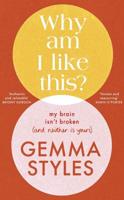Publisher's Synopsis
The concept of symmetry (as in shapes whose left and right halves mirror each other) did not originate in the Classical world, as is often supposed, but in Italy at the beginning of the Renaissance. From the outset it was associated with the belief that Nature's forms are symmetric and that nothing can be beautiful unless it too has a symmetric shape. Michael Selzer calls this the symmetry norm. The symmetry norm was soon adopted throughout western Europe. It literally changed the face of the continent, for its advocates not only demanded that all new buildings henceforth be symmetric, but that important medieval churches and other public buildings be given new, symmetric facades. The free-flowing and visually-complex textures of the medieval hortus conclusus too were replaced by the stiff, symmetric and instantly comprehended forms of the Renaissance garden. Since the Renaissance the authority and scope of the symmetry norm have continued to be enlarged. It is now a byword among archaeologists that Greek temples are symmetric; among physicists that crystals, including snowflakes are symmetric; among anthropologists that the art of primitive peoples everywhere has always been symmetric; and among psychologists that humans find symmetric shapes more attractive than asymmetric ones. The Symmetry Norm and the Asymmetric Universe is an important and original contribution to an understanding of the origins, persistence and consequences of the fallacies that have preserved the symmetry norm in full vigor for over five hundred years


























